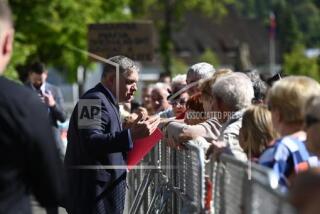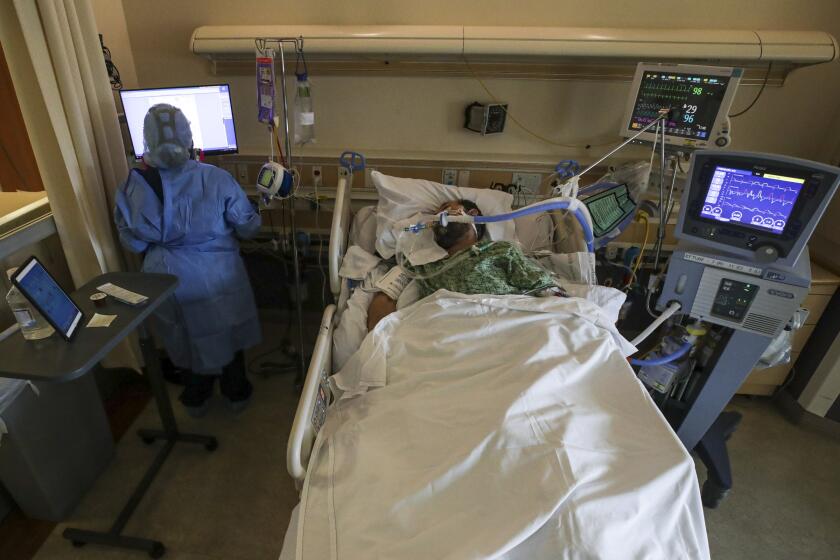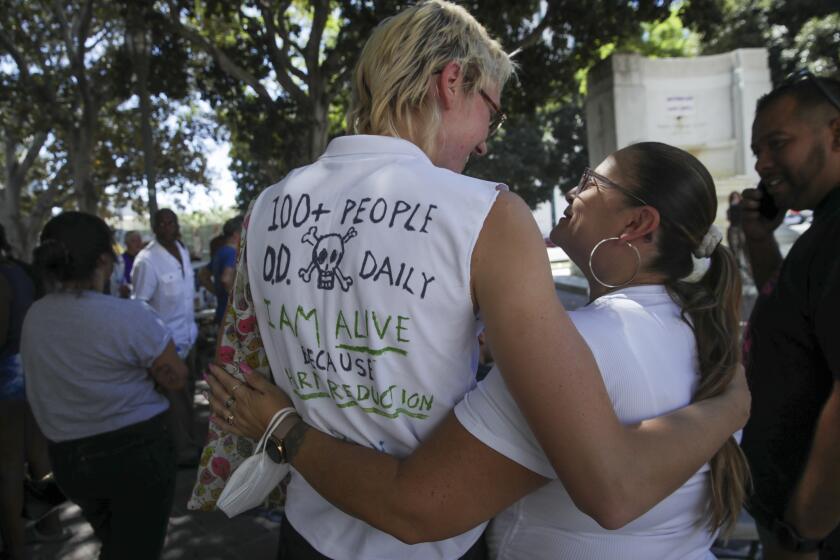Philippine Leader Vows to Crush Rebellion
Philippine President Gloria Macapagal Arroyo declared a “state of rebellion” here Tuesday as police shot at protesters outside her palace and began arresting key opposition leaders around the city.
Arroyo’s tough stance appeared to have halted days of mass demonstrations that she said were intended to overthrow her government three months after she took office.
Among those arrested for allegedly plotting her ouster was Sen. Juan Ponce Enrile, a former defense minister and pivotal figure in the “people power” protests of 1986 that brought down dictator Ferdinand E. Marcos.
During a tense night, protesters broke through police lines and reached the gates of Malacanang Palace early Tuesday before being driven back. At least two police officers and two protesters were killed, including a demonstrator who was shot in the face.
After dawn, Arroyo appeared on television and declared that she had prevailed.
“I can say to all of you that your government is in control,” she said. “The enemies are on the run. The police and the military are united behind the government, and I thank them for their heroic deeds today.”
Arroyo pledged to crush the rebellion and said anyone discovered planning a coup would be “beaten to a pulp.”
Arroyo’s declaration of a state of rebellion in Manila allows authorities to arrest suspects without a warrant, but it is not as harsh as a state of emergency or martial law, both of which would have required congressional approval.
Her move came just ahead of May 14 Senate elections, which will be the first test of the new president’s popularity. Thirteen of the Senate’s 24 seats are being filled.
At least three of the 11 opposition leaders on Arroyo’s arrest list are candidates in the race: Enrile, Sen. Gregorio Honasan and former national Police Chief Panfilo Lacson. Also on the list is Ernesto Maceda, former ambassador to the United States.
Manila’s latest political crisis was ignited a week ago when Arroyo’s government arrested her predecessor, Joseph Estrada, who was forced from office by mass protests and accusations of corruption. Estrada is charged with plundering more than $80 million from the state and if convicted could face the death penalty.
The arrest prompted hundreds of thousands of Estrada supporters to take to the streets, culminating in the violent protest outside Malacanang Palace early Tuesday by at least 20,000 people.
Estrada contends that he never gave up the presidency but merely took a leave of absence to avoid bloodshed when protests mounted against him in January. In a statement from jail Tuesday, he blamed the government for the current violence and urged his supporters to stay calm.
“The blood of these victims is now on the hands of those in power,” he said. “They shall be accountable to our people and to the coming generations of Filipinos for this shameful and irresponsible act.”
With Arroyo’s rise to power, the country has become increasingly polarized along class lines. Despite evidence of Estrada’s alleged corruption, the former movie star retains a large following among the nation’s poor, who feel he was illegally shoved aside by wealthy businesspeople and their allies. Arroyo has strong support from the business community, the middle class and the Roman Catholic Church.
Mass demonstrations have played a large part in Philippine politics since 1986, when the people power movement forced Marcos out of office. He fled the country and never returned, dying in Hawaii in 1989.
Estrada’s foes also turned to mass protests, encouraging gatherings at a Manila shrine to the people power movement when their attempts to oust him through impeachment were stymied. In the end, his top generals were unwilling to risk bloodshed and defected to Arroyo, his vice president. As Arroyo’s supporters converged on the palace, Estrada slipped out the back door.
Many called Estrada’s ouster “People Power II,” but Arroyo’s legitimacy has been subject to question from the start. There was never a public court hearing or congressional session to declare the office vacant, only a brief closed-door hearing of the Supreme Court, which declared her president.
Arroyo’s decision to have Estrada jailed, fingerprinted and photographed last week incensed many of his supporters.
They began gathering by the tens of thousands at the same shrine to the people power movement. According to some estimates, more than 500,000 pro-Estrada demonstrators had gathered at the shrine at one point.
Police responded to the demonstration early Tuesday with warning shots, tear gas and bursts from water cannons.
One group of demonstrators used a dump truck to break through police lines. In addition to the four people killed, more than 100 were injured and more than 100 were arrested.
The Arroyo government maintains that military officers and politicians loyal to the deposed president planned to stage a coup early Monday under cover of the protests but that the plot was uncovered and foiled.
“We have the evidence; we have the proof,” Arroyo said during her television address. “This was a carefully planned rebellion. The demonstrations . . . were funded by people with a political agenda. It is clear that their goal is to bring down the legitimate government.”
In his statement from jail, Estrada urged his supporters to refrain from further violence and not trigger a backlash.
“We must not give this regime any reason to further trample on our rights of assembly by using excessive force,” he said. “We must not also give this regime an excuse to declare martial law to ensure its continued stay in power and to further inflict harm on its own people.”
More to Read
Start your day right
Sign up for Essential California for news, features and recommendations from the L.A. Times and beyond in your inbox six days a week.
You may occasionally receive promotional content from the Los Angeles Times.






